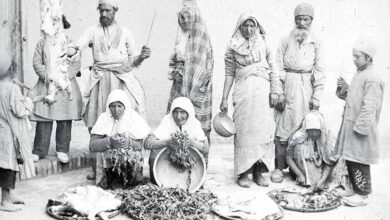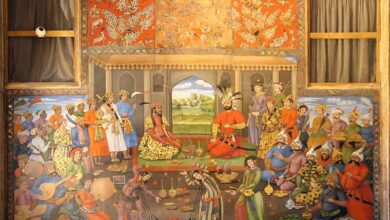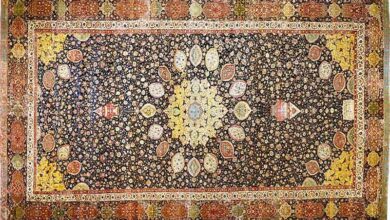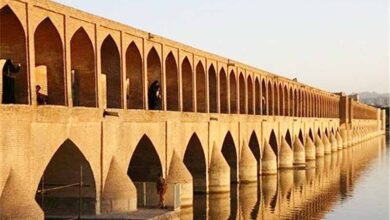Kamalolmolk

Long before man created calligraphy and thereby transcribed the language of speech into writing, the art of painting emerged at the dawn of history from among the very ancient lithographs of caves.
Painting is the art of expressing thoughts, ideals and emotions, with the help of creating certain aesthetic qualities, in visual and two-dimensional language; A language whose basic elements are line, shape, color, shade, texture, and the like, and the artist uses them to create a sense of volume, space, light, and movement on the surface.
Painting has long been the subject of various tasks such as narration, description, documentary writing, storytelling and propaganda, but gradually, and especially from the late nineteenth century, this art achieved purity and expressive independence by abandoning these tasks.
Visual art in Iran also has an ancient history; However, the discussion of ancient Iranian painting often brings to mind the art of miniature or painting. In fact, the most famous and perhaps the most valuable examples of Iranian visual art can be seen on the pages of manuscripts and references. It is worth mentioning that Iranian-Islamic painting flourished from the eighth to the eleventh century AH, but the pictorial works left from the period from more than Islam to the time of the Mongol invasion, as well as the works of murals, screen paintings, pens and others. In recent centuries, other manifestations of Iranian painting are also considered.
It seems that the developments of visual art in Iran, despite historical breaks, the influence of foreign cultures and the fusion of heterogeneous traditions, have been more or less continuous and continuous; However, this continuity can be found more in the cultural spirit and the essence of aesthetics than in the similarities that may exist in terms of style and style in the works of different periods.
In any case, the art of Iranian painting, which seems to have spread in Iran in the strict sense of the word since the Parthian period, has gone through many ups and downs throughout history until the contemporary era and the beginning of the modernization movement in Iran. The movement is known as 1320 solar (1941); Shortly before that, Kamalolmolk, the great and famous contemporary Iranian artist, passed away.
Kamalolmolk
Kamal al-Mulk (1264-1359 AH) (1847-1940). Mohammad Khan Ghaffari is one of the most famous and influential figures in the contemporary history of Iran. After him, the two-hundred-year process of combining Iranian and European traditions ends and the tradition of European naturalism is established in the form of an academic art. The son of Mirza Bozorg Kashani, who came to Tehran from Kashan after completing his primary education at the age of 13 and studied at the Academy of Arts, soon established new ideas in Iranian painting and opened a new chapter in the visual arts department of this ancient land. It is said that in 1298 AH (1880), when Nasser al-Din Shah was visiting the Dar al-Fonun school, he saw and liked one of his paintings and invited him to the court. It did not take long for the Shah to call him “a painter and a servant of Homayoun.” The paintings that belong to this period and have the signature of Naghash Bashi are more than 170 pieces. His continuous activity as a court painter and the Shah’s teacher became very popular, as in 1310 AH (1892) he was nicknamed Kamal al-Mulk by Nasser al-Din Shah. The famous painting of the Hall of Mirrors, which he painted for 5 years, is the first painting that has been prepared with the signature of Kamal Al-Molk.
Kamal al-Mulk went to Europe in 1314 AH (1896) to add to his knowledge and studied for three years in the museums of Florence, Louvre and Versailles. During this period, he produced more than 12 paintings by Rembrandt and some other famous European painters, and finally returned to Iran in 1316 AH (1989). He went to Mesopotamia in 1321 AH (1903) and lived in Atbat and Baghdad for nearly 2 years; The Jewish paintings of the fortune teller Baghdadi, the goldsmith Baghdadi and his disciple, Karbala Square and the sleeping Arabs are some of his creations of that period.
In 1329 AH (1910), the master founded the Mustazarfa School of Crafts, and it was at this time that his art reached its peak of perfection. Shortly afterwards, he resigned following disputes with the Ministry of Education and Reza Khan. After this incident, he was exiled to Neishabour and lived in his personal property in Hosseinabad Neishabour for the rest of his life. He died at the age of 95 and was buried next to the tomb of Attar Neyshabouri.
Kamal-ol-Molk’s works are unique in the accuracy of the design, color maturity and accuracy of the design. He made all the people and objects in his paintings in a precise and good way; Baghdadi goldsmith’s painting, which is one of the masterpieces.
* Sources and references are available in the editorial office of Artmag.









